In the Studio: Margaret Curtis
“I became very interested in what was behind a facade, or what was underneath, w...
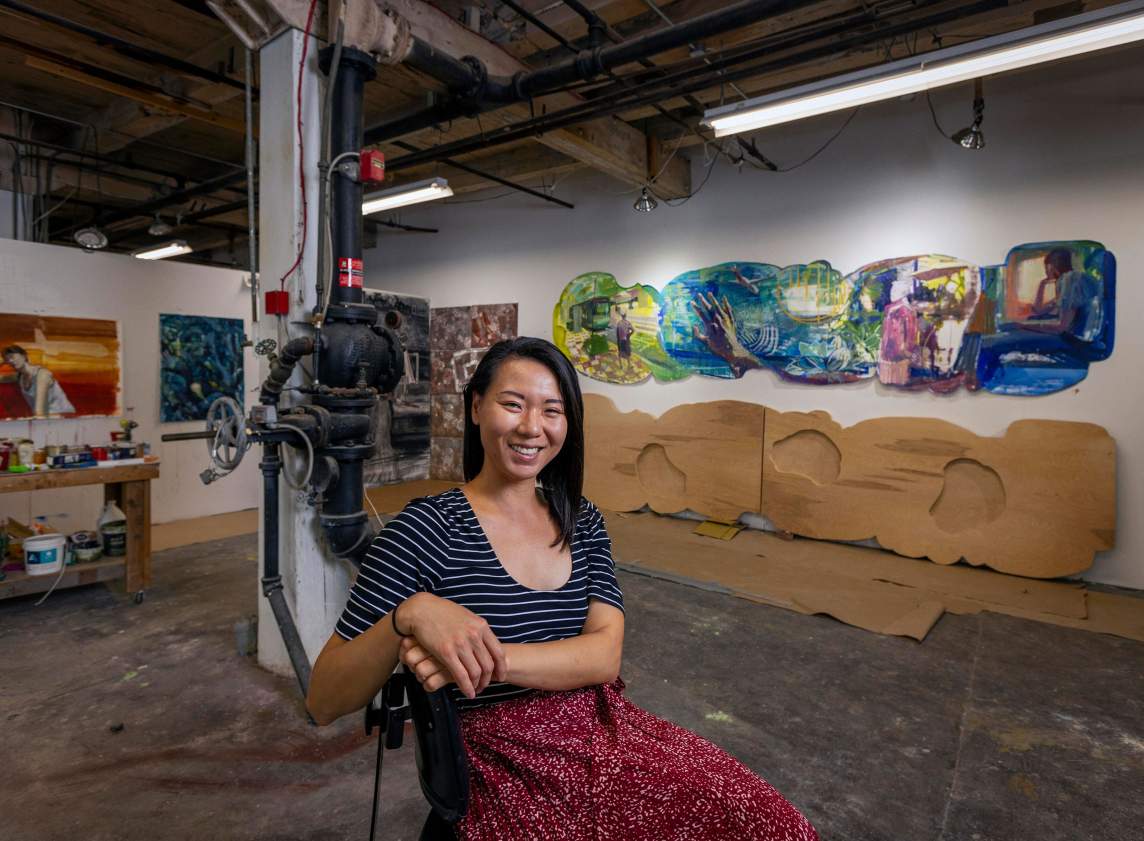
Kathy Liao is an artist, educator, and arts administrator based in Kansas City, Missouri. She is a 2023 Joan Mitchell Fellow. We interviewed Liao about her work and creative practice in February 2024. The following is an edited transcript of that conversation.
My studio practice is in some ways like a diary. I’m constantly drawing from experiences or things I'm exposed to during the day—whether it be an event or an anecdote. But within that, there’s always a recognition that past, future, and present are all connected in some ways. Whatever is happening to me now—what I'm experiencing, what I'm feeling—oftentimes is tied to another experience or memory in the past, and it might dictate my choice or my actions going into the future. If something left an impression on me—an image, a form, a feeling—I want to dig a little deeper. What is this? Why did it hit me so? I try to bring that into the studio space.
Oftentimes it's not one thing, but layers of things that build on top of each other because they lean in or connect into that moment. My process is like excavating or unpacking these layers—figuring out everything that coalesced into this moment or allowed it to happen.
I'm trained as a painter and I did a lot of printmaking in grad school as well, so my work is grounded in two-dimensional media. But over the last couple of years, I feel very open to my work taking shape in different mediums or forms. During the pandemic, I became more drawn to the tactile and started creating more three-dimensional objects, partly because of the lack of touch and connection at that time. So now, there are more sculptural elements within the work, tying into installations with large wall pieces to create a sense of environment.
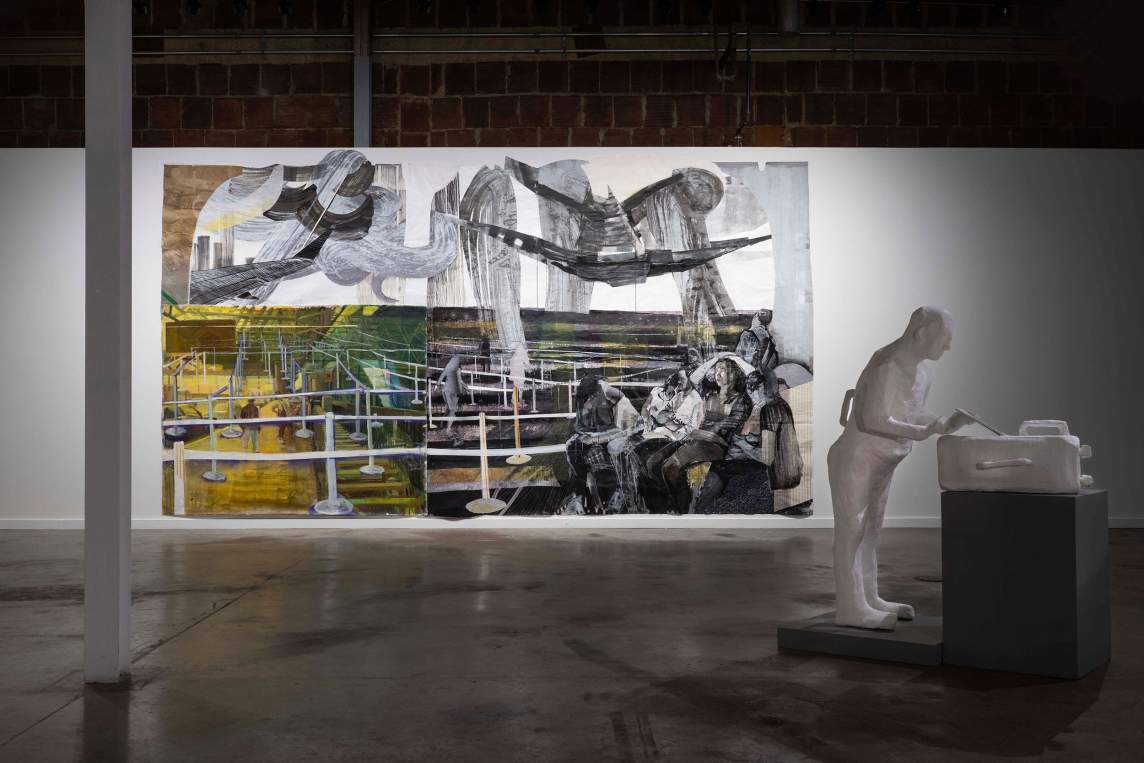
A lot of my work is rooted in imagery—whether it's an experience or a story or a thought that I want to bring out, highlight, or manifest into existence. As I'm thinking about an image, what really takes it from one stage to another is the process of making—layering paint, scraping and manipulating the material itself. In that moment of working through the process, much of the time the meaning and the stories all strip away, because I’m so focused on the material itself.
I think that is also one of the things that keeps bringing me back to the studio—those moments in the making where everything fades away because you want to see how that next layer will change the composition or how all the colors interact with each other. Or if I’m creating an object, seeing how that completely changes the environment of all the other elements in this space. There is just this pure joy of trying something new and seeing what happens.
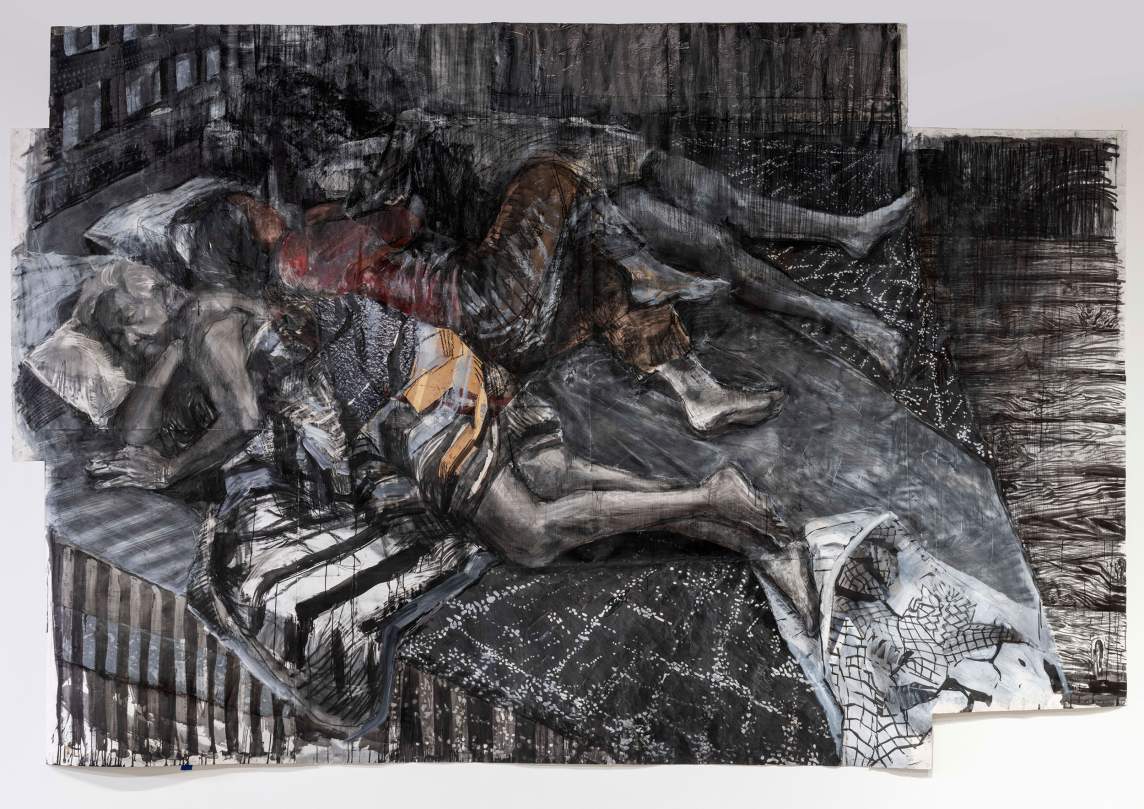
An overarching theme within my work is a sense of returning to the roots. I grew up in Taiwan and moved to the United States when I was in middle school. Many of my family members still lived in Taiwan, including my dad, who lived in Taiwan for my whole life, until he passed away about 10 years ago. So a lot of my work has been processing that distance between here and there, between Taiwan and America. It touches a lot on movement, transition, travel between two distances.
Even here in the States, migration has been part of my experience as well, moving from southern California to Seattle, to Boston, and then out to Kansas City in the Midwest. In my work, I’m reconciling that drive and motivation to move, to relocate myself, to understand my identity in the context of the environment I'm in. How am I reconciling that distance of how far away I'm moving? What is that gap between where I am now versus where I was, or where my family is?
I have a body of work that has to do with transitional spaces—the in-between space of the airport, of transit stations, these gray spaces that we've all personally experienced. Sometimes there's an anticipation of being in those spaces because you know you're moving to that next destination. But there are also times where one can feel that you are just caught in this gray space of, for example, connections at the airport.
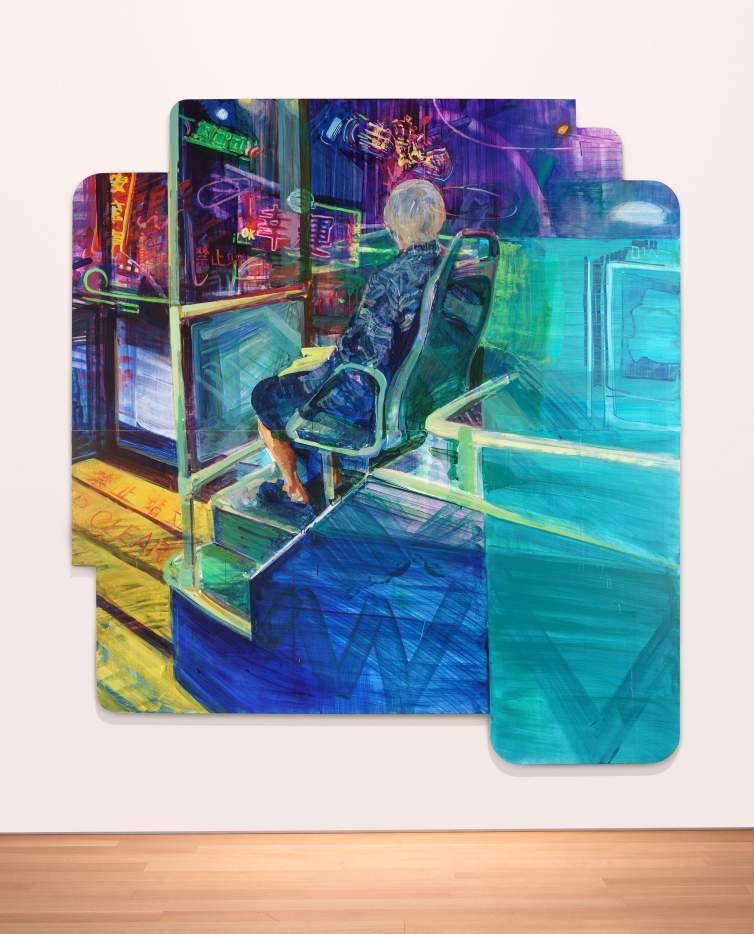
One of my past projects, liú nián, started out as a large two-dimensional painting in that series and then, after the pandemic hit, it transformed into something different. liú nián, which means “fleeting time” in Chinese, started out as a very crowded airport scene, thinking back to my personal experience of when I first immigrated to the United States, coming out from that underground arrival terminal at LAX.
When the pandemic hit and that sense of the in-between airport space almost completely disappeared from all of our lives, I felt like this painting, this idea, was stuck in limbo—which has its own meta layers. There was a period of time when I would step into my studio and I just felt paralyzed, like, what am I doing here? What is the purpose of this painting?
So that painting just came to a stop for a long time. During this period, I started creating sculptural objects—experimenting in ceramic. As I mentioned, a part of that was just about touching during this time when my family felt so far away and I needed connection.
A sculptural piece that came about during that time was a seated figure of my grandma. I got to see my grandma on FaceTime because my mom would call me from Taiwan. As the pandemic went on, I could see my grandma getting smaller and smaller. I could see her bony shoulders. She has dementia, so she can barely focus on the screen, and half of the time, she doesn't recognize me.
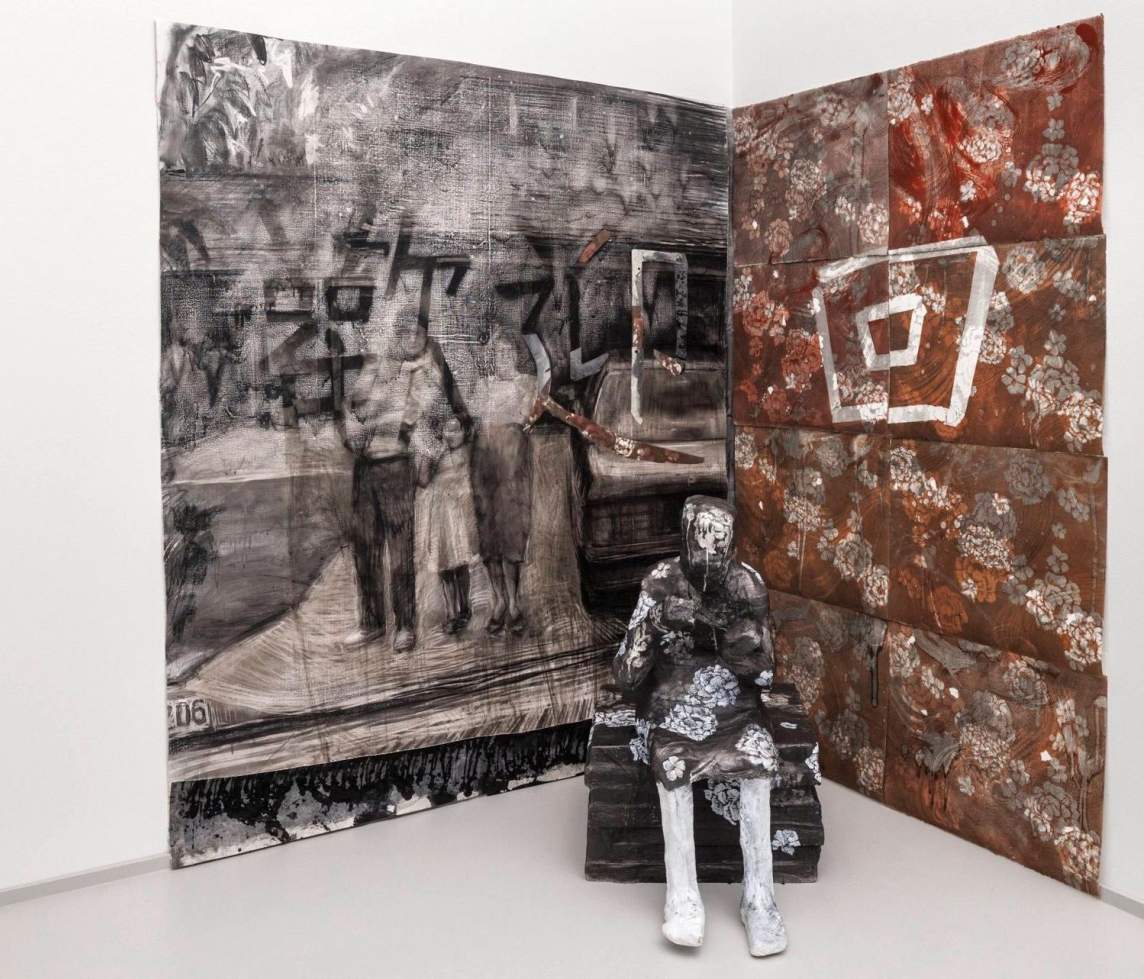
This sculptural piece came out of me just wanting to touch her shoulder, wanting to touch her form, her frame. When I was building out the legs, it felt like I was washing her, or caressing her leg, building out her form. That was cathartic during that time.
After I finished that sculpture, the idea of the airport piece, liú nián, that I had started before the pandemic, really gelled together. After almost a year of FaceTiming my mom from Taiwan, there was a very specific image that I screenshotted of my grandma in an empty metro station in Taipei. Typically, if you ever visit Taipei, the metro stations are packed with just tons and tons of people in those spaces. It was just so out of this world to see her in this empty metro station. Along with that image, layers of thoughts came up of her with her dementia, how she's experiencing this environment, the layering of my personal experience of perceiving her through this phone. All of these layers started to converge on top of each other as I thought about this image.
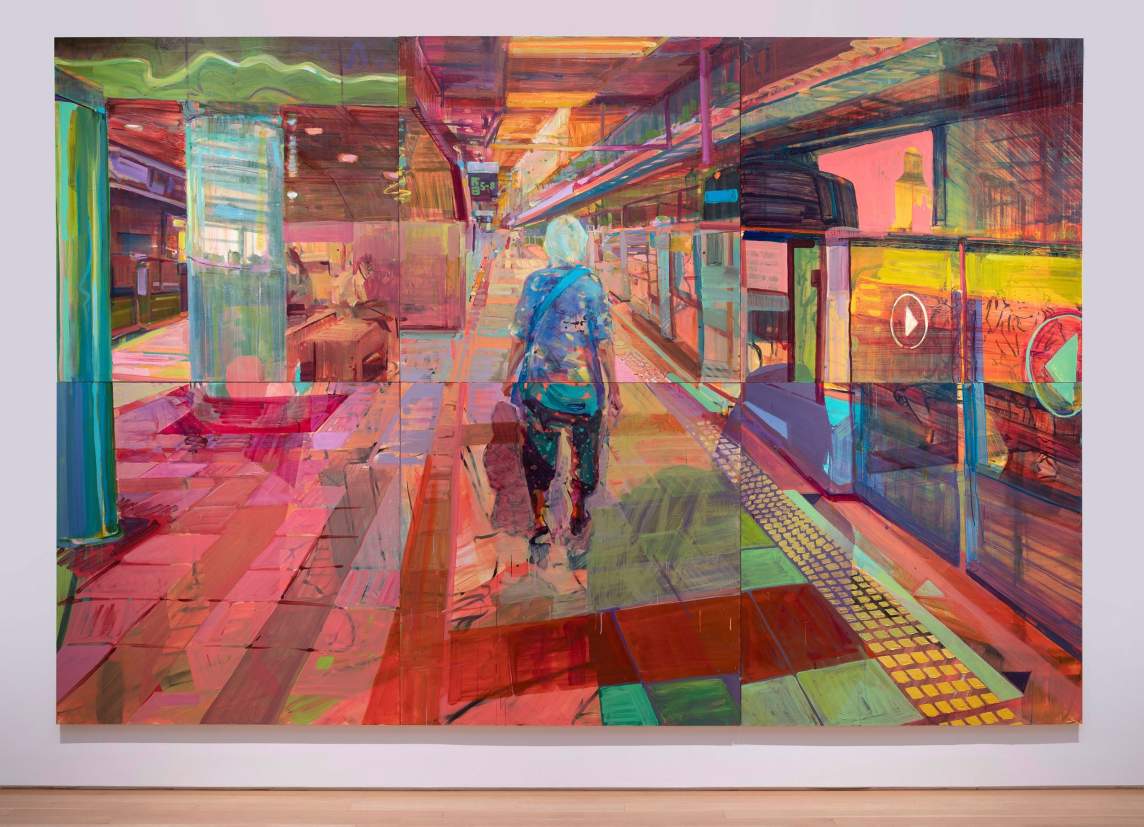
So I came back to liú nián—a piece that has multiple layers. The final layer is that image of my grandma by herself in this empty train station. If you get close to that painting, you'll still see the crowd that's underneath the layers of paint, in translucent layers of glazes. That history is still there, tying back to the idea that history is always there, it’s what got us to this point, and then beyond.
liú nián and many of my paintings from recent years are very large. That one is 10 feet by 15 feet. There’s a practical reason behind that, which is that I got a residency about six years ago at a studio space here in Kansas City called Studios Inc. I couldn’t be more grateful for the studio space because it is giant. They gave us about a football court of space to make work. So because of that opportunity, I felt I was able to be very ambitious. It just gave me the space to spread out and try everything that I wanted to try to allow the work to expand to wherever it needs to go. So, that's one aspect of it. The studio space makes a difference.
My work also has been large in scale just in acknowledging the immensity of some of the experiences that I have had. Immigration was such a huge part of my life, and even my childhood, before I came to the United States—going to the US embassy in Taiwan, going through all the steps to be naturalized. It's such a big part of my experience.
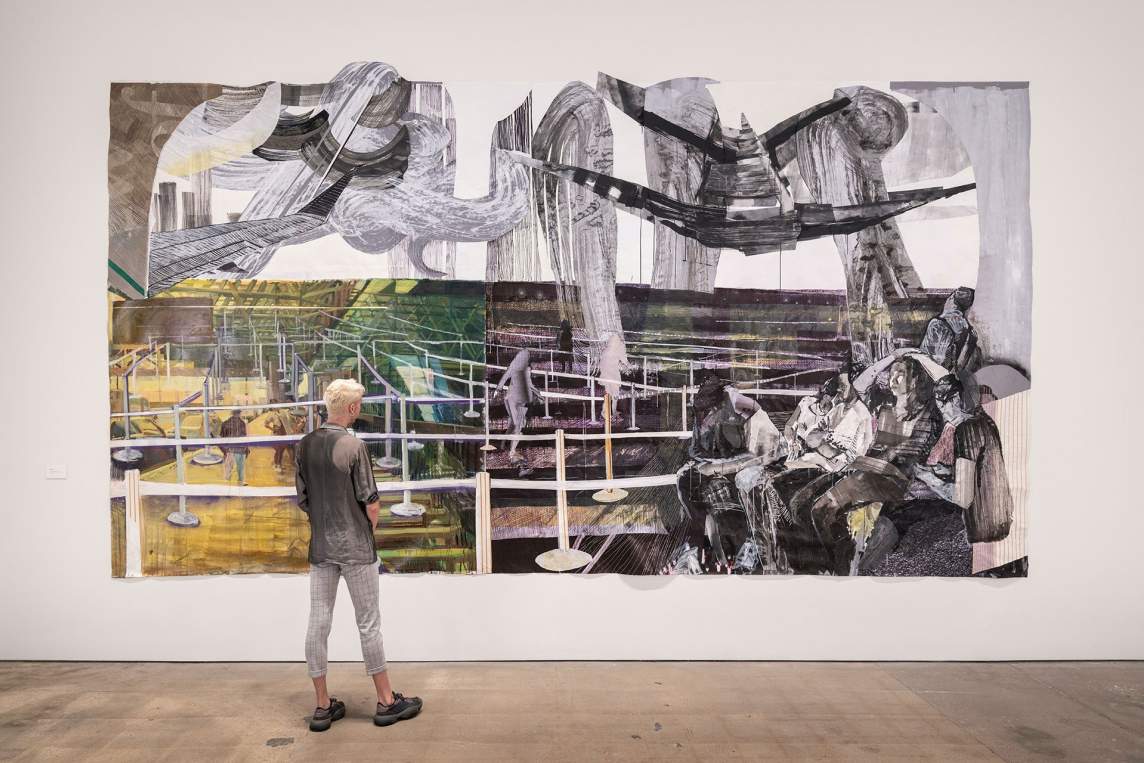
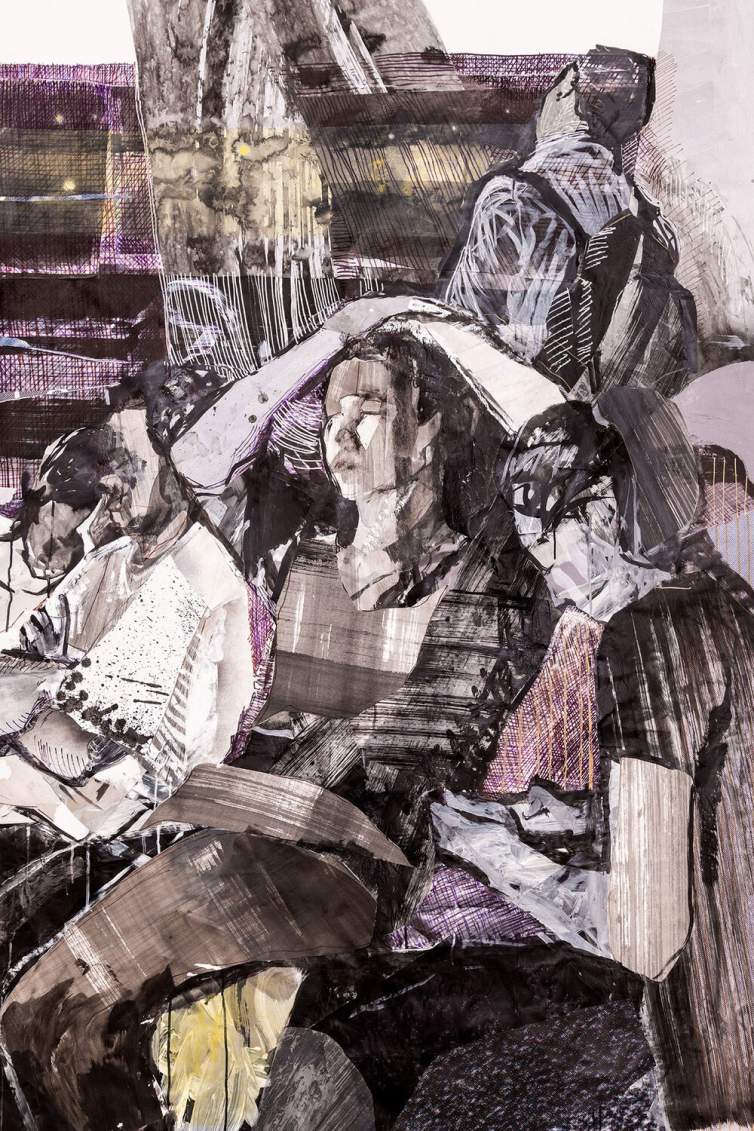
One of my other works, in between the lines, depicts the customs and immigration lines at the airport. People call it the cattle call. If you’ve gone through that, sometimes when you're standing in line, it's like, "Wow, I'm in this line again, and it just keeps going forever, and I'm going to go through this every single time that I come back."
I know this is all part of our experience, but I see it as a metaphor for the system that we go through to get to the next step. I feel like in between the lines became that large because of thinking about the immensity of that experience. As with my other work, there are a lot of layers in it. That piece started out with just an image, an old photo I found of when my family first came to the States. We’re standing in front of Tom Bradley Airport, and it was the first picture we took when we got here. That’s where the painting started, but then it started expanding to include the customs and immigrations line.
Added on top of that, I started thinking about the airport, airplanes, about borders, about walls. So it just expanded to that scale with these multiple connections, layered onto that experience I had. It ties back to that idea of a diary of experiences, where oftentimes there is this process of building a thought into a presence, into an environment.
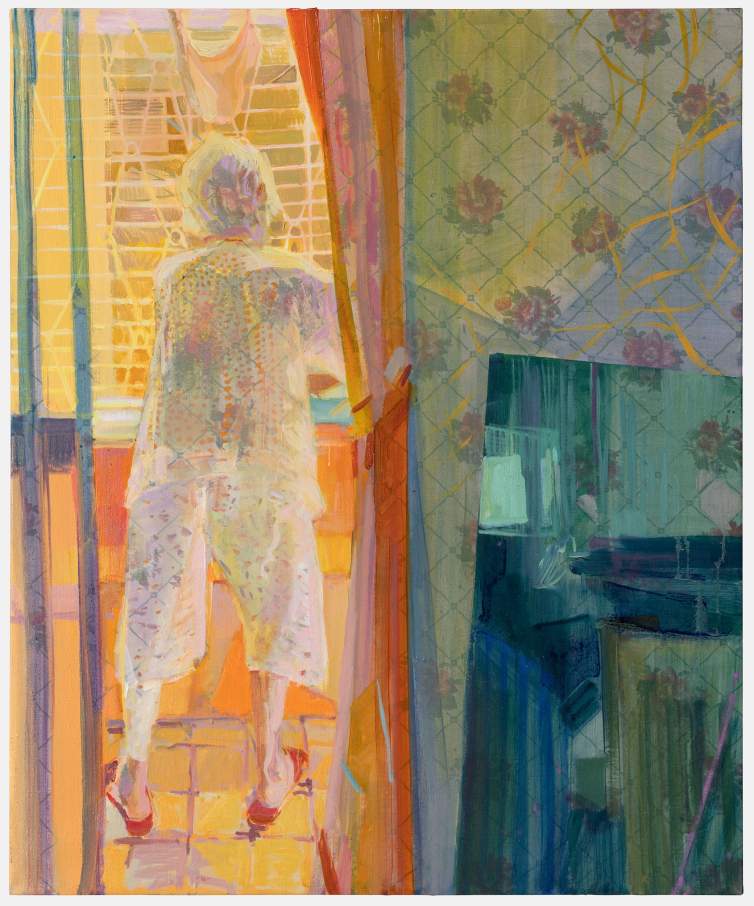
I just moved into my new studio space on February 1st. The space is still a mess, but I am appreciating the change of environment, and I don't know how that's going to shape my work going forward. I'm at a point of transition in my practice where I’m questioning, what's next? I'm still trying to figure out or understand where it's taking me at this point.
I do have a new series in progress, that came out of a series of trips that I took last year to Taiwan, partly to help my mom and my grandma move from Taiwan to here. During that time, I got connected more to my family on my dad's side, which I have been less connected to in the past. My dad's side of the family is Hakka, which is a sub-ethnic group of Hong Chinese. That side of the family speaks Hakka and they have their own cultural and history and traditions. One of the things that left a mark on me as I spent more time with these family members is that language, Hakka—my father's native tongue.
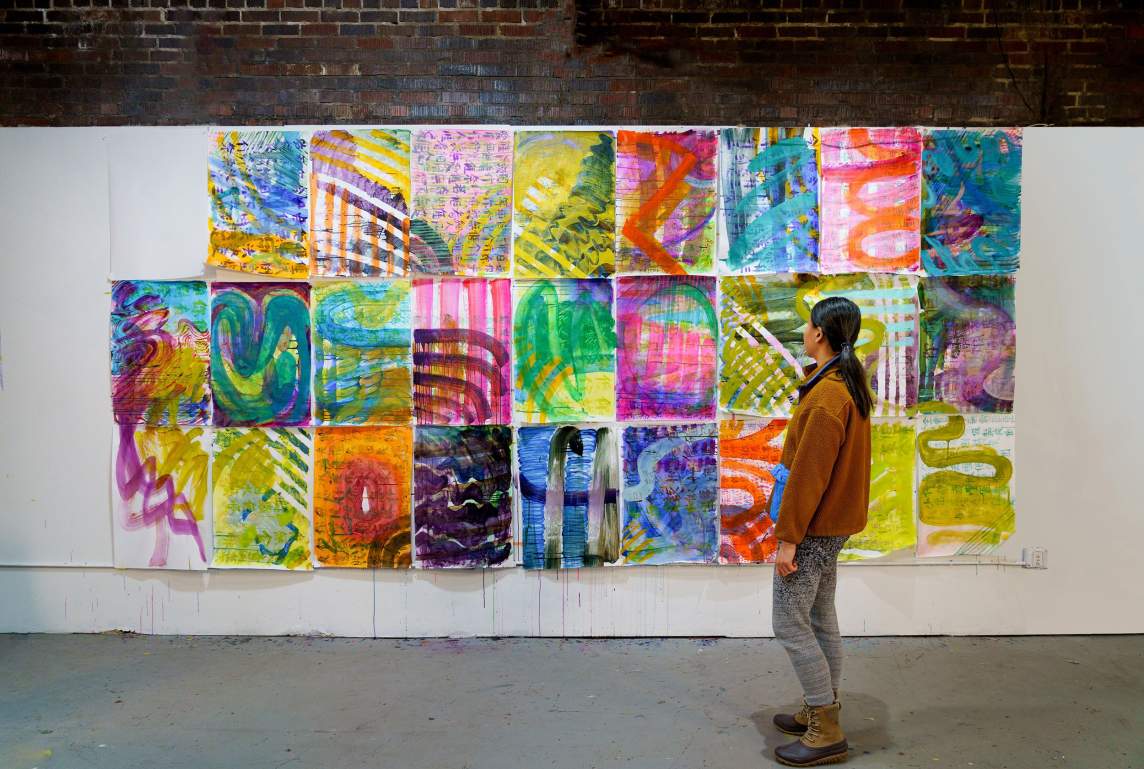
Since fall of last year, I started learning how to speak Hakka, and now I'm connected with one of my relatives who is also teaching me. So I'm starting to pick up that language, and in my studio, I've been making these more abstract, layered paintings—thinking about the language, the characters, the mark-making, and bringing that into the layering, both on the narrative side and on the abstract side.
I'm curious where this is going to go. I'm not quite sure, as it hasn't really come together yet, but it is tying back to what I mentioned about that joy in the studio—that moment of just being able to practice and then paint and build in the push and pull of the language, the mark making, and the color. That has been very interesting to me as it’s happening in the studio.
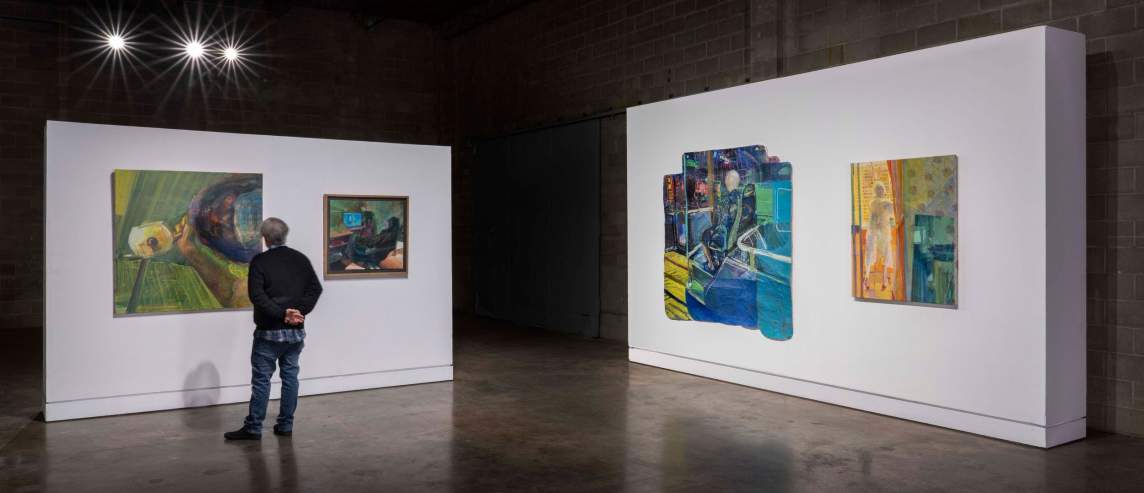
When I think about my work, and what I hope it offers to people who see it, I always come back to the word connection. It is always amazing when I hear from people who have experienced the pieces about how they connected to their personal experiences. They may not know what the story behind the piece is, but they do connect on some level. Because there's so much space in my work, between and around the figures, I think people are able to fill in that space with their own experiences, with their own stories, with their own environment.
I also think about my work going beyond just the exhibit, beyond the artwork itself—whether that’s in the form of facilitated conversations, or other ways of bringing people together within that space. When I am asked to do an artist’s talk, I don't do it in the traditional way of showing slides and saying, “This is what the work is about.” Instead I ask people to sit in a circle with me and we open up the conversation. I am always deeply appreciative of how open and how vulnerable people are when they join me in these conversations. If the work allows them to feel, they can bring something to light in a way that they may not otherwise have an opportunity to share.
Interview and editing by Jenny Gill. Learn more about Kathy Liao’s work at kathyliao.com and on Instagram.